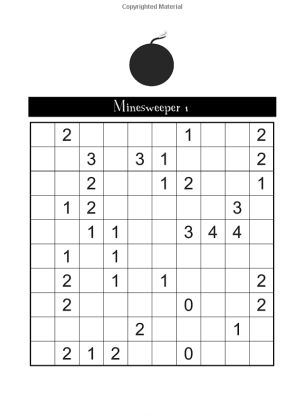
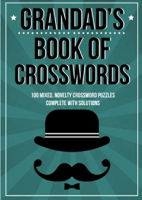
Grandad's Crosswords |
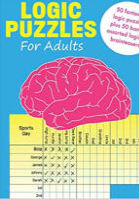
Logic Puzzles for Adults |
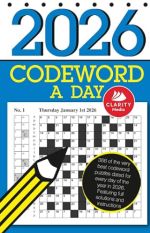
Codeword a Day 2026 |
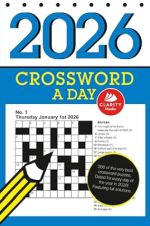
Crossword a Day 2026 |
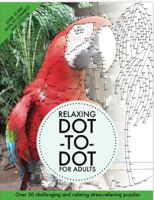
Relaxing Dot to Dots |
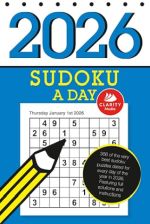
Sudoku a Day 2026 |
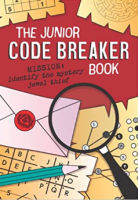
Junior Codes Book |
Gift Ideas and Key Links
Popular Books:

Gift Ideas:
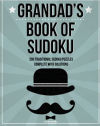
Grandad's Sudoku
Gift Ideas
Crossword Books
Codeword Books
Sudoku Books
Wordsearch Books
Brain Training
Kids Travel GamesDinosaur Puzzle Book
My first Word Search Book
Children's Fun Brain Training
Kids' Brain Training Puzzles
Colour By Number Maths
Kids' Number Kriss Kross
Children's Crosswords
Children's Codewords
Kids' Killer Sudoku
Under The Sea- Facts & Puzzles
Learning The Time
Children's Number Triangles
Children's Number Puzzles
Number Pyramids Puzzle Book
Mental Maths Book
Children's 6x6 Sudoku Book
Maths Squares Book
Gift Ideas 2020
Sudoku Puzzles
Christmas SudokuJigsawdoku Puzzle Book
Large Print Mixed Sudoku
16x16 Sudoku
25x25 Sudoku
12x12 Super Sudoku
Gigantic Sudoku
Mixed Sudoku
Fiendish Sudoku
Personalised Sudoku
Sudoku-London
Fillomino Puzzles
'X'mas Sudoku
Variety Sudoku
Valentine's Sudoku
Relaxing Sudoku
Sudoku a Day
Arrow Sudoku Book
Beginners 4x4 Sudoku Book
Calcudoku Book
Circle Sudoku Book
Consecutive Sudoku Book
Giant Sudoku Vol 1 & 2
Hypersudoku Book
Hidoku Book
Jigsaw Sudoku Vol 1 & 2
Killer Sudoku Vol 1 & 2
Killer Sudoku Large print
Large Print Sudoku Vol 1 & 2
Samurai Sudoku Vol 1 & 2
11 & 13 grid Samurai Sudoku
Sudoku 16x16 Vol 1 & 2
Sudoku 25x25 Sudoku Book
SuperSudoku 12x12 Book
Supreme Sudoku 15x15 Book
Sudoku X Book
Word Puzzles
Jumbo 20x20 Wordsearch PuzzlesLarge Print Arrow Word Puzzles
Kid's Word Fit Puzzles
Ultimate Crossword Mix
Bible Wordsearch Colouring
Giant Print Wordsearch
Word Definition Puzzles
Giant Print Crosswords
Word Trail Puzzles
Large Print Crosswords
Personalised Wordsearch
Large Print Kriss Kross
Kriss Kross Puzzles
Easy Themed Codewords Geography
Wordoku Puzzle Book
Large Print Wordsearch Book
Codewords Vol 1 & 2
Picture Wordsearch
Skeleton Crosswords Book
Word Ladders Book
Wordwheels Book
Logic / Number
Bridges PuzzlesNumber Fill Puzzles
Bathroom Mental Puzzles
Giant Kakuro
Magic Square Puzzles
ABC logic Puzzle Book
Battleships Book
Binary Puzzles Book
Binary Puzzles 12x12 Book
Large Print Code Words
Futoshiki
Hashi/Bridges Book
Kakuro Book
Minesweeper Puzzles Book
Number Cross Puzzle Book
Number Search Vol 1 & 2
Large Print Number Search Book
Number Squares Book
Sikaku Book
Simple Loop Book
Skeleton Crosswords vol 1 & 2
Space Maths Book
Puzzles For Your Pocket Books
Image / Visual
Dot-To-Dot:At The ZooUltimate Pets Adult Dot-to-dot
Large Print Adult Dot-to-dot
Adult Maze Puzzles-mixed
Kids' Maze Puzzles-mixed
Adult Dot-To-Dot
New Maze Puzzles
Children's Dot to Dots
Children's Maze Puzzles
Symbol Wordsearch Puzzles
COLOUR Hanjie Puzzle Book
Hanjie Puzzle Book
Perception Puzzles
Picture Mazes
Rebus Book
Summer Holiday Puzzle Book
Other Books
Sandwich SudokuKindness & Positivity Dot-To-Dot
Christmas Dot-To-Dot
Children's Personalised Birthday Story
Large Print Puzzle Book
Mother's Day Dot-To-Dot
The Gift Of Sudoku
Grandad's Quiz Book
Children's Halloween Puzzles
Dot-To-Dot Personalised
Calming Puzzles
Colouring Wordsearch
Sudoku and Crossword Diary 2017
Personalised Codeword
Personalised Wordsearch
Personalised Sudoku
Mother's & Father's Day Sudoku
Personalised Notebook
Notes & Puzzles
Grandad's Novelty Crosswords
Children's Notes & Puzzles
'X'mas Sudoku
Puzzle While You Wait
Grandad's Notes & Puzzles
Wedding Vow Renewal Puzzles
Grandad's Sudoku Puzzles
Easter Puzzles
St George's Day Puzzles
Mother's/Father's Day Puzzles
Valentine's Sudoku
Birthday Mixed Puzzles
Children's Personalised Book
Book of Christmas Puzzles
Personalised Family Puzzle Book
Birthday Sudoku Book
Occasion Books
Secret Santa Puzzle Book
Anniversary Sudoku Book
Book Of Minesweeper Puzzles
|
Minesweeper puzzles are a fantastic and fun little logic puzzle, so it is perhaps a little surprising that they are hard to find in print.
That all changes with this great collection of 100 of these puzzles for you to enjoy. They are presented on a 10x10 grid, and the puzzles get gradually more difficult as you work your way through. All the answers are included at the back of the book. So how do you play the minesweeper puzzles in this book? Well, the rules are simple: there are a series of mines hidden in the grid. You need to work out their location and mark them in. To help you do this, some squares have a number in them. This tells you the number of mines that are hidden in adjacent squares to that one - including diagonally adjacent squares. Squares that contain a number cannot also contain a mine. And that's all there is to - it is a logic puzzle with one solution per puzzle, and you can reach that solution just using logic that follows from the rules above: you won't need to guess to solve any of the puzzles in this delightful book of 100 minesweeper puzzles that we hope you'll enjoy solving. If you would like to try a few of the puzzles before buying this book, please click the link below: The book of Minesweeper Puzzles is available to purchase right now from Amazon.co.uk, Amazon.com and Amazon.eu. Please click the relevant link below to purchase this book via Amazon: If you're based in Europe but outside the UK, then this book is also available on the version of Amazon in your country. Minesweeper Puzzle Solving Tips
Never tried a minesweeper puzzle? You can try a sample Minesweeper Puzzle Online here. If you prefer to play puzzles online rather than in print, you can also play thousands of online puzzles with a membership to the Puzzle Connoisseur's Club.
Here is a video that explains the rules of minesweeper puzzles - if you're unsure, watch this video before reading the strategy and solving tips below: The puzzles in this book can get quite tricky, but they can all be solved with logic and have a single solution. So what rules will you need? Well, the simplest rule is that if there is a 0 then remember to mark all the squares around it - including diagonally adjacent squares - as blanks. We suggest using an 'x' for a blank square but you might prefer a dot or similar. For the bomb squares, perhaps putting a circle in is most common, others prefer to write the letter 'B' instead. Typically when solving these puzzles, though not always, you can make most progress by looking at the corners first, and then moving around the edges, and then into the centre: this is of course because these squares have less neighbours than central squares and therefore less options for you to consider - and therefore they can often bear fruit early in the solve progress. If you look at the sample puzzle to the right then you can see from the top in the top right corner that the two mines can be written straight in, and this also takes care of the 2 and the 1 beneath it. Many solvers like to put a line through a square once all the mines it is associated with are placed - this can be good accounting and ensure you don't miscount or still count as live a square for which actually all the mine placements have already been deduced. In addition to the simple 'this must' or 'this can't' go here rules, and the good accounting practice with regard to marking placed mines, and empty squares and fully-placed mine totals, the hardest rule you will need is to cross-reference between overlapping placements. For instance, on any occasion where information about mines is shared by squares, then you might need to cross-reference between those squares to make deductions. This can be particularly tricky when there are several numbered squares together that share adjacent cells: in these instances you might have to consider the possible ways these squares can interact to make progress. But it is important to remember that you will never need to do more than cross-referencing between groups like this and thinking 'if this is placed here, then because of the neighbouring mine placements, it would be impossible to place a mine over there, so therefore this can't be placed' and similar: in other words you will never need to actually guess and see what happens, you can use 'if this, then that' logic to solve all these puzzles and won't need anything harder. Typically you will be able to see in your head that one of two squares, say, must contain a mine but you're not sure which: this is the sort of logic that can often be used to place other mines elsewhere or else mark empty squares. But if you find it tricky to visualise, you might like to use small pencil dots for the combinations you are checking in your head and put them actually on the paper to see the implications of a placement before proceeding.
This second video shows how to solve the sample puzzle step-by-step: |
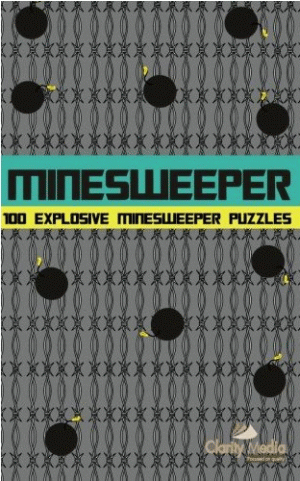
|
General Knowledge Quiz 2
In our new series of videos, you can learn about new puzzle types and take part in quizzes. Why not have a watch?This is our second general knowledge quiz. It's time to see how good your general knowledge is! We hope you enjoy having a go and seeing what score you'll get!
For individuals with comments, questions or ideas with regard to our puzzle books, then please use this Contact Form to drop us a line.
